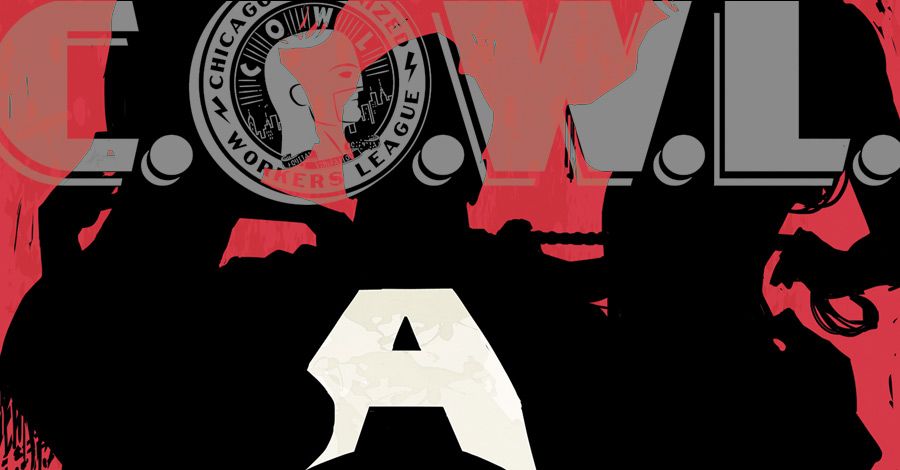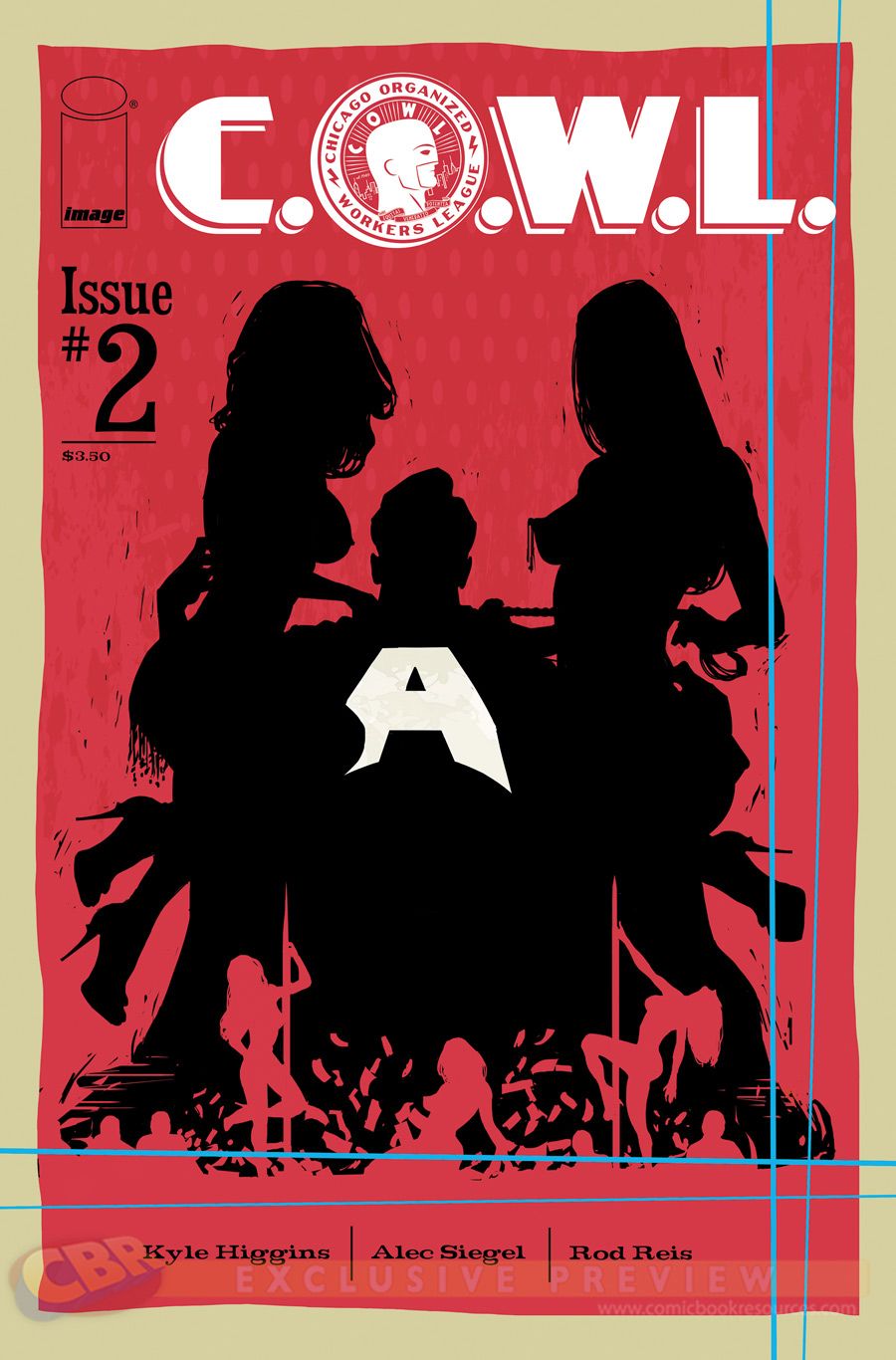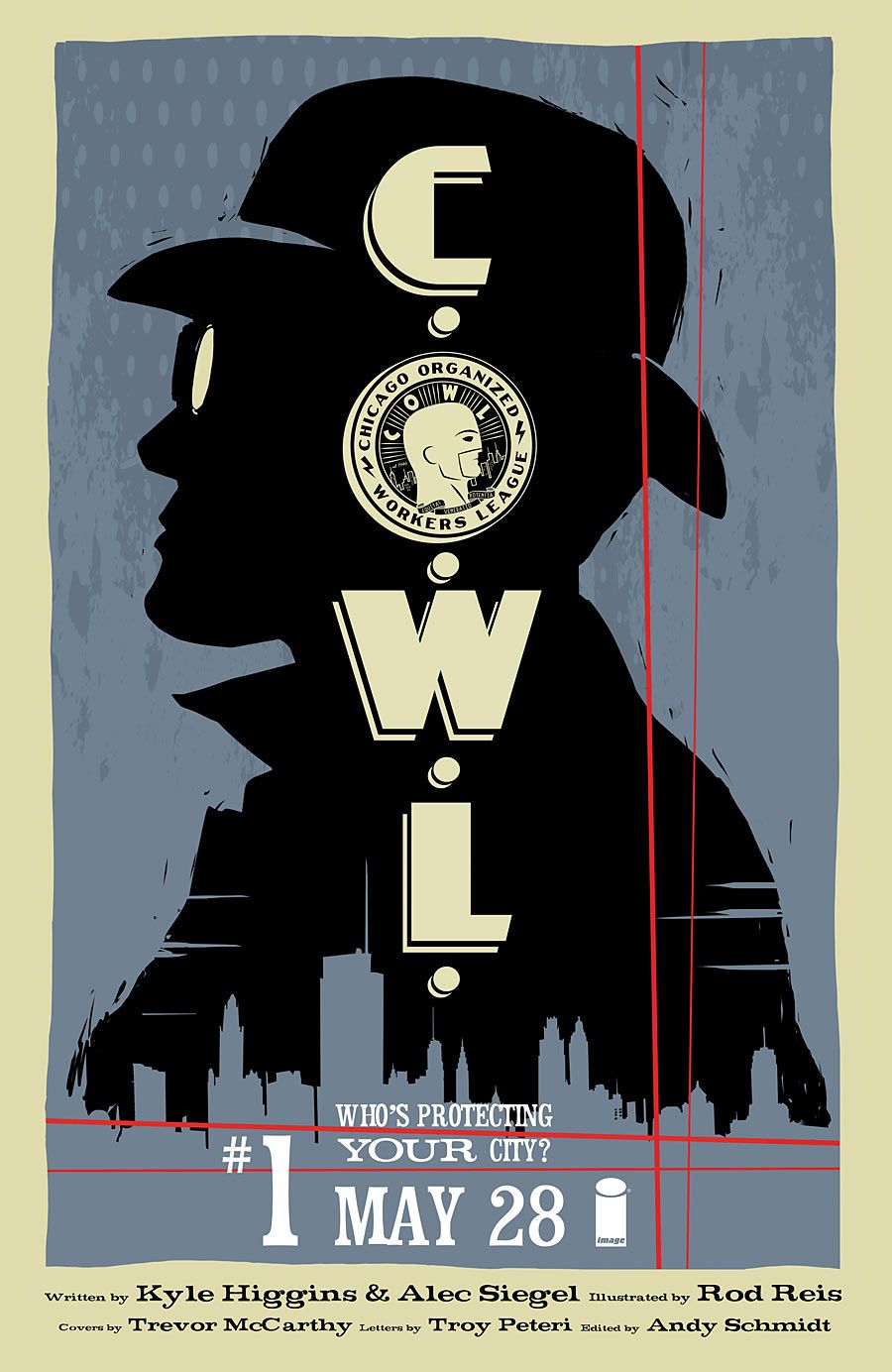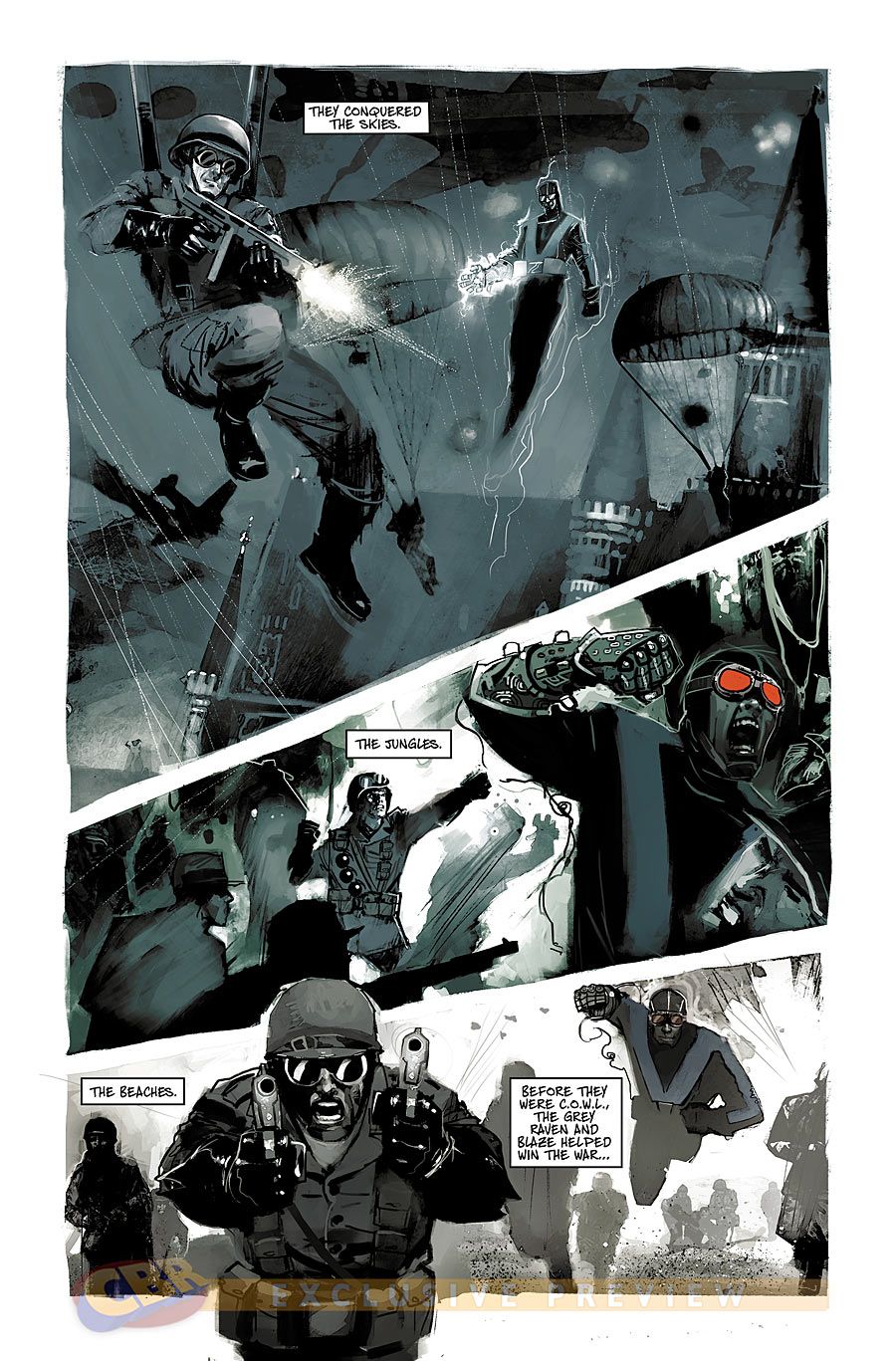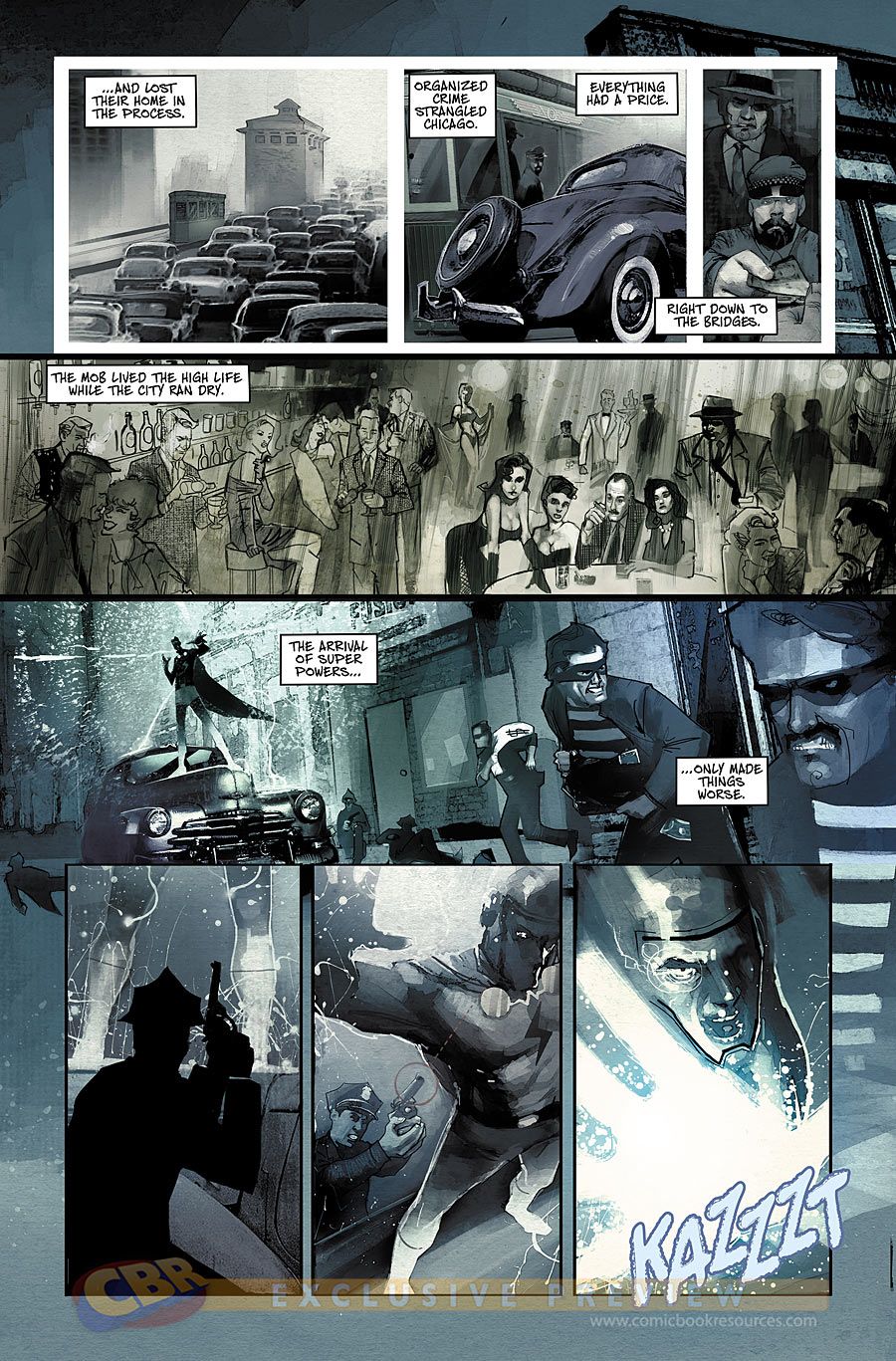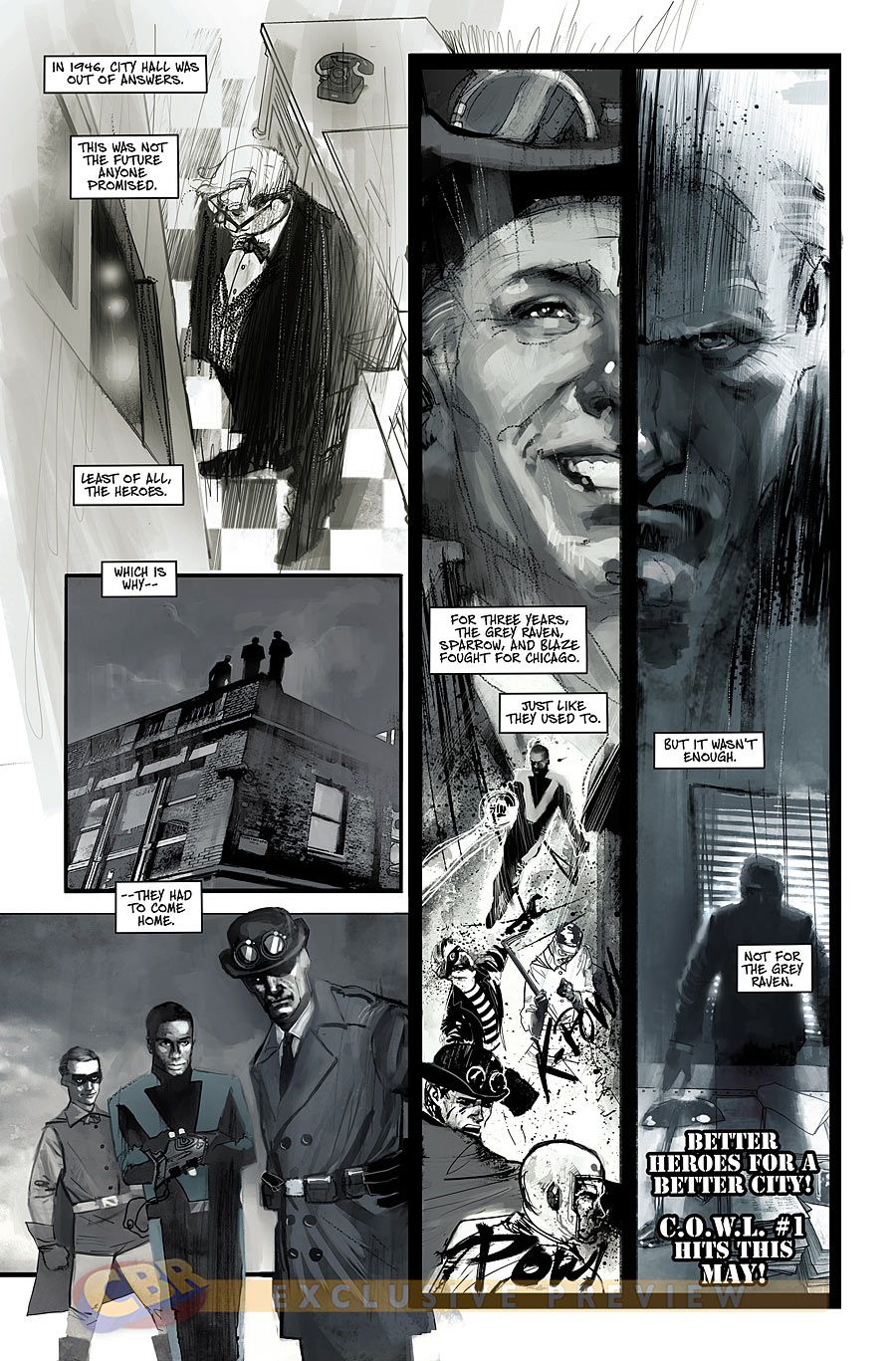A superhero's work is unpredictable, with violence, destruction and injury all in a day's work. You might think it would be great to have their powers, their strength, their cunning, but what about their medical bills? What about the cost of uniform repair? How would you like to get up for a long day at the factory after battling thugs all night without hazard pay, or even a lunch break? These brave men and women put their safety on the line to protect the public, but who is protecting them? This is where C.O.W.L swoops in to save the day: The Chicago Organized Workers League, defending the defenders. At least, that's what the organization set out to do.
In the stylish new Image Comics series from Kyle Higgins, Alec Siegel and Rod Reis, the volatile political climate of 1960s Chicago is blended with a unionized superhero group which has fallen into the trap of bureaucracy. "C.O.W.L." explores a reality where heroes have organized to provide services to the city full time, and the moral implications that arise. Is heroism, normally a result of altruism, voided when money and power come into play? Or are heroes always going to do the right thing?
The idea for "C.O.W.L." began as a short film Higgins and Siegel created in college and has since expanded into their first creator-owned book. The pair joined CBR News to talk more about the ongoing series, including its cast of heroes and villains, the bold artistic design of Reis and how the history of Chicago shapes the story.
CBR News: The origins of "C.O.W.L." were in a short film that you and Alec worked on together in college, and now you're collaborating on the comic. What keeps you together?
Kyle Higgins: It started as a short film at Chapman University. Alec and I co-wrote it and I directed it.
And yeah, we've been working together for quite a while. We met in high school and were both into film and writing. We worked on a couple short films together, but it wasn't until "The League" that we actually co-wrote.
The biggest reason we keep doing stuff together is that it's fun, and we complement each other very well. We both have different strengths, and for me -- it's way more enjoyable to go through the creative process with another person. I mean, writing can be pretty lonely and miserable. Having another person to share that pain with is really nice. And, most important of all, the work we do together turns out really well.
Alec Siegel: It's more fun than not. Like Kyle said, there are times where the ideas don't come easily, but I think that's one of the strengths of writing together. All it takes is one of us to hit on something -- even if it's not quite right at first -- for the other to take it and run with it. 

On the other hand, we've been doing this together long enough that it's not uncommon to have the same idea at the same time. It's a little scary when that happens.
What felt right about taking this story into comics versus pursuing a film format?
Higgins: Well, we love comics, and we've always wanted to explore the world and the characters in an ongoing format. So it was a pretty natural fit.
Siegel: When we first started working on "The League," we created way more material than could ever be explored in a short film. We tried breaking a version of the story as a feature, but even one hundred and twenty minutes doesn't really do the concept justice. A comic gives us the room to really explore the world and build out the characters in interesting ways.
Your book deals with the unionization of a superhero labor union -- what questions were you asking yourselves as this story unfolded? Was this concept something you'd thought about before while reading comics? What does the union provide for its members?
Higgins: It's not something I consciously thought about, no. But at a certain point, a few years ago, I did start to think about how inefficient and expensive superhero work would be. Especially with the heroes essentially working two jobs. Of course, bringing money into things raises a lot of moral and ethical questions -- which, not coincidentally, is about the same time Alec and I started to find the world of "C.O.W.L." more and more interesting.
Siegel: On the "membership benefits" front, "C.O.W.L." serves the city as its primary -- when it relates to powers and costumed threats -- police force. They have a contract with Chicago, and the union is composed of different divisions including patrols, investigations and tactical. The division of labor turns being a superhero into something a bit more quantifiable, essentially a nine to five job and all the ins and outs that go with that.
Higgins: We haven't gotten into whether they use an HMO or a PPO for medical -- but who knows. Maybe it'll come up in the next round of negotiations. [Laughs]
What do you find interesting about the climate of unionization in Chicago, and how did you feel that superheroes could blend into that history?
Higgins: I find the history of politics in Chicago in general pretty interesting. Mayor Daley, his relationship with the unions, the Political Machine -- it's a great setting. Even in an alternate history story like "C.O.W.L."
How much of the environment in the series is historically accurate to the time period and how much did you guys create? What were some of the more entertaining pieces of history to revise? I love how, from what I've seen, it looks like the sort of 'World ofTomorrow' that used to be in old Disney cartoons about the future. It's super cool.
Higgins: It's something we've gone back and forth on for a while now. In the short film, we'd envisioned Chicago -- and the world -- as being very historically accurate. But the truth is -- it wouldn't be. The second you introduce super powers to the world, you're creating a divergence. For us, the divergence starts during Prohibition, with the beginnings of masked criminals (working for bootleggers) and gets bigger in the closing days of World War II when the deployment of the atomic bomb kicked off the beginnings of super powers.
Siegel: The resulting 1960s do kind of have that "World of Tomorrow" flavor you're talking about. It's a bit of a James Bond-inspired 1960s. Technology's a little more advanced in certain places -- like the wrist watch radio communicators that everyone in "C.O.W.L." uses.
In terms of the art, was there a particular style you had in mind while you were developing the story?
Higgins: You know, I didn't have anything specific in mind other than trying to make it look and feel different from other superhero material that's out there right now.
You'd previously worked with Rod on "Nightwing" -- what made him a good fit for "C.O.W.L?"
Higgins: For starters, he's incredible. He's very innovative and passionate and really gets what the book is. Rod's stuff is also completely different from anyone I've worked with before, which makes it all the more exciting that we're both doing our first creator-owned book -- Alec, too -- together. And along with Andy Schmidt -- who's editing -- and Troy Peteri -- who's lettering -- we've got a really awesome, collaborative team that's all about pushing the boundaries and having fun. I couldn't ask for a better group of guys.
Are any famous figures from that period in history going to appear?
Higgins: That's definitely possible --
In the preview pages, we hear about The Grey Raven, Sparrow and Blaze -- what are they like? What makes them heroes?
Higgins: Those three are the founding members. The Grey Raven -- Geoffrey Warner -- is the leader, Sparrow is his sidekick, and Blaze is the second in command. However, that was in the 1940s and 1950s. Now, in the 1960s, Sparrow is no longer around and Geoffrey, due to age, has hung up the Raven costume. He serves as C.O.W.L.'s president from behind his desk in the Palmolive building. Blaze is the only one still in the field, as his powers are technology driven via his gauntlet.
Siegel: Initially, these three started C.O.W.L. with very noble intentions. But as it happens, over time, motivations have changed. The organization is something of a bureaucratic machine now.
Who are some of the villains we will meet?
Higgins: We'll meet Skylancer in Issue #1. He's an ex-KGB agent turned mercenary who pulls jobs with a jetpack and photon cannon. He's actually the last of the "great villains." His takedown -- assuming C.O.W.L. does take him down -- serves as the end of an era. With the big, flashy threats gone and leadership in the city starting to change, not to mention the motivations of certain C.O.W.L. members becoming more and more self-serving, a lot of people start to question whether the union is still necessary.
Siegel: From an issue-to-issue standpoint though, C.O.W.L. deals with a lot of different threats -- some of which fall more into the police department's jurisdiction. There will also be some mob-manufactured villains -- and possibly the return of someone big from the group's past.
How do you keep yourselves inspired and immersed in this '60s world while writing?
Siegel: Lots of John Barry soundtracks.
Higgins: And Lee Morgan [Laughs]
Kyle, what has it been like transitioning into creator-owned work? Do you still plan to pursue other comic work?
Higgins: I had a bit of anxiety at first, as there were so many unknowns. Now that I'm a couple months in, I love the process. We've got a fantastic team, all of who are very, very devoted to the book. Andy Schmidt has been great, as have Troy Peteri, Eric Stephenson, Ron Richards, Drew Gill and Jonathan Chan, with answering all my questions and helping Alec, Rod and I figure out how to get something like this off the ground. Solicitations, scheduling, pricing, marketing -- these aren't things I've really had to worry about before. In a lot of ways, it feels very similar to making short films; you don't have any money and you have to wear a lot of different hats, but the end product is completely yours. For all of us on "C.O.W.L.," that's incredibly appealing.
And yeah, I'm sure I'll continue other comics work. I'm still writing "Batman Beyond 2.0" and "Batman Eternal," both of which are fun. That's really all I want -- to put out good work that I'm proud of and enjoy making.
"C.O.W.L." #1 hits stores on May 28.

